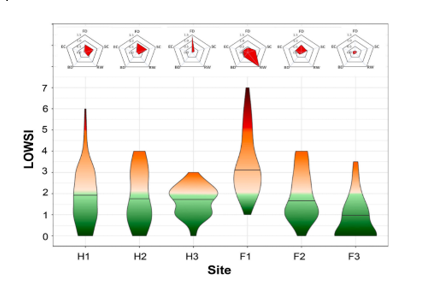DEVELOPMENT, VALIDATION AND TESTING OF AN OPERATIONAL WELFARE SCORE INDEX FOR FARMED LUMPFISH Cyclopterus lumpus L.
Lumpfish (Cyclopterus lumpus L.) are widely used for controlling sea lice in salmon farming, but their welfare is often challenged by poor husbandry, stress, and disease outbreaks, which compromise their ability to delouse salmon and cause public concern. It is hence important to identify when the welfare of lumpfish is being compromised in a simple and effective manner so that remedial actions can be taken. We developed, validated and tested a Lumpfish Operational Welfare Score Index (LOWSI) based on a visual assessment of skin and fin damage, eye condition, sucker deformities and relative weight, operational welfare indicators that fish farmers considered to be the most informative and were validated against cortisol measurements. We also present percentile length-weight charts to enable fish farmers to detect underweight and emaciated lumpfish at different stages of development. The lumpish welfare score index was quick and easy to score and was highly repeatable (intra class correlation coefficient = 0.83 ± 0.05). Most lumpfish (71%) displayed good welfare, but significant differences were found between six commercial sites and 28% of lumpfish had lower than normal weights for their length, and 10% were emaciated. The most common welfare problems were sucker deformities and fin damage in hatcheries, and poor eye condition and body damage in sea cages, conditions that may increase the risk of emaciation. Being able to score the welfare of lumpfish quickly and accurately will help improve their welfare, reduce stress-related mortalities, and improve the sustainability of the salmon farming industry.
Variation in the Lumpfish Operational Welfare Score Index (LOWSI) at six commercial sites (three hatcheries – H1-H3, and three sea farms, F1- F3; n = 245). The proportion of fish falling into each of the three welfare classes (A-C) is shown by the violin plots in different colours (class A, green: welfare unlikely to be compromised; class B, orange: moderately compromised welfare; class C, red: poor welfare).
